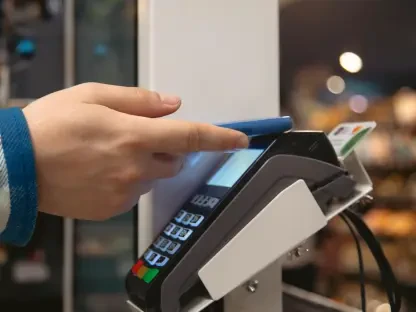The quick-commerce sector is undergoing a transformation as it adapts to the changing demands of consumers. Once primarily focused on delivering groceries with speed, these platforms are now broadening their horizons. Ensuring a variety of products reaches customers with the same rapidity, quick-commerce is catering to a culture that increasingly values immediate satisfaction.This evolution reflects the modern consumer’s impatience for fast delivery of an ever-widening array of items. Aware of these expectations, quick-commerce businesses are demonstrating flexibility and resourcefulness by venturing beyond food essentials to provide a wide range of products. From household goods to personal care items, these companies are committing to the on-demand ethos that has come to define the retail experience in the digital age.In essence, quick-commerce is redefining convenience, offering an extensive assortment of non-grocery merchandise to consumers with almost no waiting period. This shift is not just a reactive measure but a strategic move to stay relevant and competitive in an industry where the speed of delivery is often as crucial as the products offered. As such, quick-commerce platforms are repositioning themselves as multi-faceted, agile services that can meet the dynamic needs of today’s shoppers.
Quick-Commerce Strategic Growth and Diversification
Embracing a Wider Product Range
Quick-commerce, once synonymous with expedited grocery delivery, is now proliferating into a diverse array of categories including beauty, electronics, health, and toys. This strategic pivot caters to the ever-growing consumer impetus for instant access to a broader range of products. With a finger on the pulse of contemporary shopping behaviors, these platforms are curating offerings that extend well beyond the pantry, meeting the demands of time-strapped customers who crave both variety and velocity in their shopping experiences.The expansion into non-grocery sectors signifies a deliberate maneuver by quick-commerce platforms to capture new market segments. Customers, who got a taste of rapid delivery for household staples, are now looking for the same convenience when buying a tube of the latest matte lipstick or acquiring noise-canceling earbuds for their commute. Quick-commerce is reshaping retail paradigms, driving the narrative that nearly any product category should be just a few clicks and mere minutes away from the consumer’s doorstep.
Driving Sales Through Non-Grocery Items
Spearheading this rapid delivery revolution are pioneers like Zepto, Swiggy Instamart, and Blinkit, who are witnessing their sales graphs climb with the addition of non-grocery products to their inventories. The allure of quick-commerce lies not only in the rapidity of delivery but also in the fact that these platforms have scaled up to embrace products that resonate with today’s consumers. High-engagement items like beauty gadgets, fitness gear, and consumer electronics are finding a home on these platforms, feeding into the frenzied pace of modern lifestyles where consumers demand everything, and they demand it now.These non-grocery categories have seen a noticeable uptick in sales volume, indicating that the convenience of fast delivery is paramount to the contemporary shopper. As these platforms expand their reach and refine their logistical prowess, they’re proving to be effective one-stop shops for a myriad of goods that were traditionally procured from specialty stores or large-format retailers. This transition represents a paradigm shift in consumer purchasing patterns, where the expectation of instant access is extending to encompass a larger sphere of their shopping needs.
The Role of D2C Brands and Products
Forging Partnerships with Emerging Brands
Quick-commerce platforms are astutely leveraging partnerships with Direct-to-Consumer (D2C) brands to diversify their offerings. As a result, these collaborations function as a force multiplier, spurring the growth of both the platforms and the brands themselves. By converging with labels that range from trendy skincare lines like Mamaearth to innovative appliance manufacturers such as Atomberg, quick-commerce services are curating an eclectic mix that captivates a new demographic, fostering loyalty not just to the platform but to the brands that adorn its digital shelves.These partnerships embody a symbiotic relationship where D2C brands gain visibility and a wider audience while quick-commerce platforms enjoy the added value of offering unique, sought-after products. It’s a strategy that serves dual purposes—injecting variety into the platforms’ inventories and giving consumers another reason to stay logged in and keep shopping. As these platforms strive to become the primary shopping destinations for today’s consumer, the inclusion of these emerging brands is instrumental in keeping their market offerings fresh and competitive.
Sales Surge in Select Product Segments
Certain product segments have shined as particularly lucrative in the quick-commerce model, with the beauty and personal care (BPC) sector leading the charge. The BPC segment, which includes everything from hair care products to makeup essentials, has recorded staggering quarter-on-quarter growth. This statistically significant uptick could be the byproduct of a society ever invested in personal appearance, further fueled by the onslaught of beauty influencers and an endless stream of social media trends.Quick-commerce has uniquely positioned itself to intercept the consumer’s impulse buy, capitalizing on the intersection of immediacy and desire that drives the beauty industry. In addition, these platforms are matching traditional e-commerce markets in pricing, making them an irresistible choice for the price-savvy shopper. With an array of offerings, from top-shelf moisturizers to affordable face masks, quick-commerce is not just riding the wave—it’s leading the charge in the sector’s explosive growth in the digital space.
Expansion Strategies and Market Adaptation
Broadening Inventory with a Focus on Stock Variety
Strategic inventory expansion is paramount for quick-commerce platforms aiming to entrench themselves within the e-commerce domain. They are broadening their assortment of stock-keeping units (SKUs) with a keen eye on balancing mainstream and niche products. Quick-commerce platforms are not just throwing products at consumers to see what sticks; they’re carefully curating their offerings based on sales data and market trends. Like maestros conducting an orchestra, they skillfully select SKUs that resonate with the consumer.The approach to product selection is under constant evaluation, with some items such as earbuds selling rapidly while others, like smartwatches, are gauged for their traction with the quick-commerce consumer base. It’s a meticulous process of trial and response, wherein platforms continuously assess and realign their product portfolios in pursuit of an optimal mix that caters to the fragmented needs of modern consumers. The transformation of the product landscape is as dynamic as the market itself, with quick-commerce platforms remaining agile to stay ahead of the curve.
Leveraging the Strength of Private Labels
The maturation of quick-commerce is also evident in the rise of private labels such as Zepto’s Relish. These in-house brands have carved out their own space in the sector, offering unique products that not only draw in sales but also elevate the profile of the platforms. Owning a product brand serves a dual purpose—it reflects the company’s commitment to quality and innovation and enhances profit margins by cutting out middlemen. Private labels are a testament to the platforms’ vision of end-to-end control over the supply chain and customer experience.The success of private labels is a prominent indication of the market’s receptiveness to new product lines and quick-commerce platforms’ ability to influence consumer trends. These proprietary brands lure in customers seeking exclusivity and value, further encapsulating the competitive edge that quick-commerce services wield in the fast-moving consumer goods arena.
Quick-Commerce Platforms’ Aggressive Pursuits
Swiggy Instamart’s Product Selection Growth
A tangible manifestation of the sector’s potential is illustrated by Swiggy Instamart’s aggressive expansion of their product offerings. By quadrupling its selection in critical categories, Swiggy Instamart is making a clear statement—variety isn’t just the spice of life; it’s the cornerstone of quick-commerce. A broad selection is indispensable in maintaining the platform’s relevance and drawing in a diverse customer base with disparate needs and preferences.This ambitious approach to product diversification signifies a robust commitment to not only meet current consumer expectations but to anticipate and shape future demands. A formidable inventory serves as a bulwark against an ever-competitive market, solidifying Swiggy Instamart’s position as a frontrunner in the quick-commerce race.
The Future Landscape of Quick-Commerce
Looking towards the horizon, the quick-commerce sector is brimming with potential, marked by considerations of fundraising rounds, IPO prospects, and strategic forays by veterans like Flipkart. Zepto’s anticipated $300 million fundraise and Swiggy’s flirtation with an IPO are cases in point, underpinning the sector’s vibrancy and the bullish sentiments it inspires. These movements indicate a substantial bet on the future of quick-commerce—a future where speed, agility, and adaptability are not merely advantages but necessities.The market landscape is evolving at a breakneck pace, with quick-commerce firms not just keeping pace but setting the tempo. The blend of market acuity and innovative expansion strategies have paved the way for quick-commerce to contend as not just a viable alternative to traditional e-commerce but as a primary channel for consumer shopping. As these platforms continue to innovate and broaden their appeal, the potential for growth and transformation within the industry seems boundless. Quick-commerce is redefining the tenets of retail commerce: speed, access, and convenience are the new currencies that are driving consumer choice. With a deft combination of strategic partnerships and anticipation of customer predilections, quick-commerce platforms are not just following market trends—they are at the helm, leading the charge into a future where instant gratification is not just desired but expected.









